
This article is a part of our Pride of Omlet series, a collection of amazing stories which shine the spotlight on extraordinary pets and share their selflessness, bravery, talent and compassion with the world.
-Written by Anneliese Paul
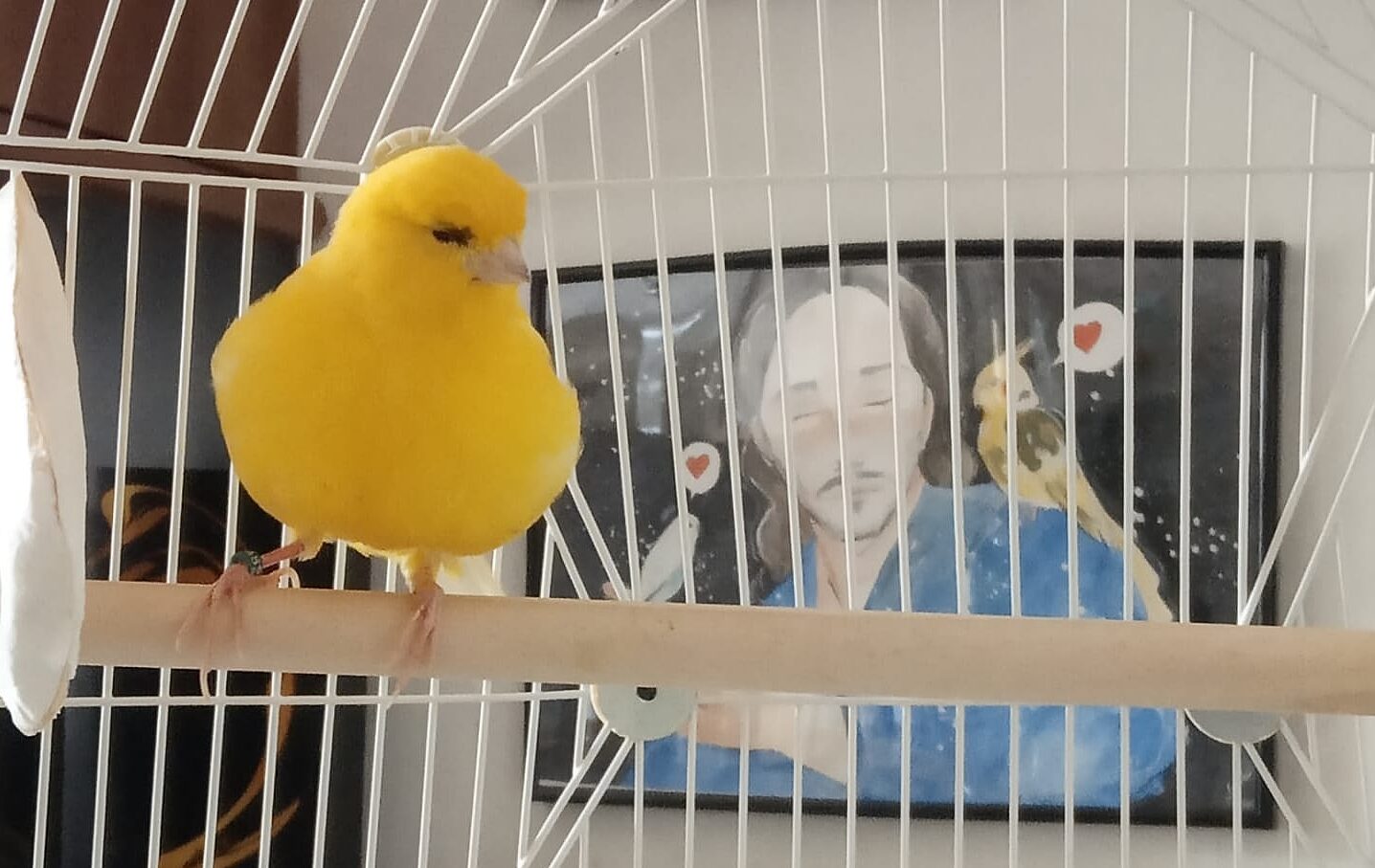
At the tender age of one, Peaky is already a retired filmstar. He had lived in a cage his whole life, released only to perform. When Joana and Fergus took him home, he was a fluffy, yellow bundle of nerves. But they are determined to help Peaky, their cute little canary companion, to come out of his shell.
When Joana met Fergus, she didn’t know she was falling in love with a human and his pet cockatiel. It had been his companion for 22 years. Together they grew the flock with a cheeky budgie. “He was like a dog; he wanted to sleep with us. You could hold him and kiss him!” But tragically, within a short space of time, the cockatiel died of old age, and then the budgie became terminally ill. The house fell silent.

Lockdown 1 without birds was quiet and sad for Joana and Fergus. To cheer themselves up, they decided to get their home ready for another bird and after plenty of research, they agreed on the Omlet Geo as the beautiful new bird home. All they needed now was a bird to live with them.
Fergus works in TV, and if anyone offered an animal, Fergus was known to take it. One day a ray of sunshine arrived on set-a bright little canary owned by a person who supplies animals for TV shows. Fergus struck up a conversation with the owner and learned that this little bird had a feisty character and had to be separated from the other birds, which meant he lived alone, probably in a smaller cage. Seeing Fergus’s enthusiasm, the owner asked, “Do you want this one?”
Ecstatic, Fergus called Joana, “We can get a canary!” When the clapper board shut, Fergus drove Peaky home to Edinburgh. But they got stranded en route in a massive snow blizzard and were stuck in the car for hours before being rescued by locals who took them in for the night. The next day, Peaky and Fergus continued their journey home, and when they finally arrived, the house instantly came alive.
Peaky sings beautifully and chirps up when he hears a running tap, the kettle, the hairdryer, and he even provides backing vocals to Joana’s zoom calls. However, unlike their previous birds, he’s a scared soul that feels safer inside his Omlet Geo.
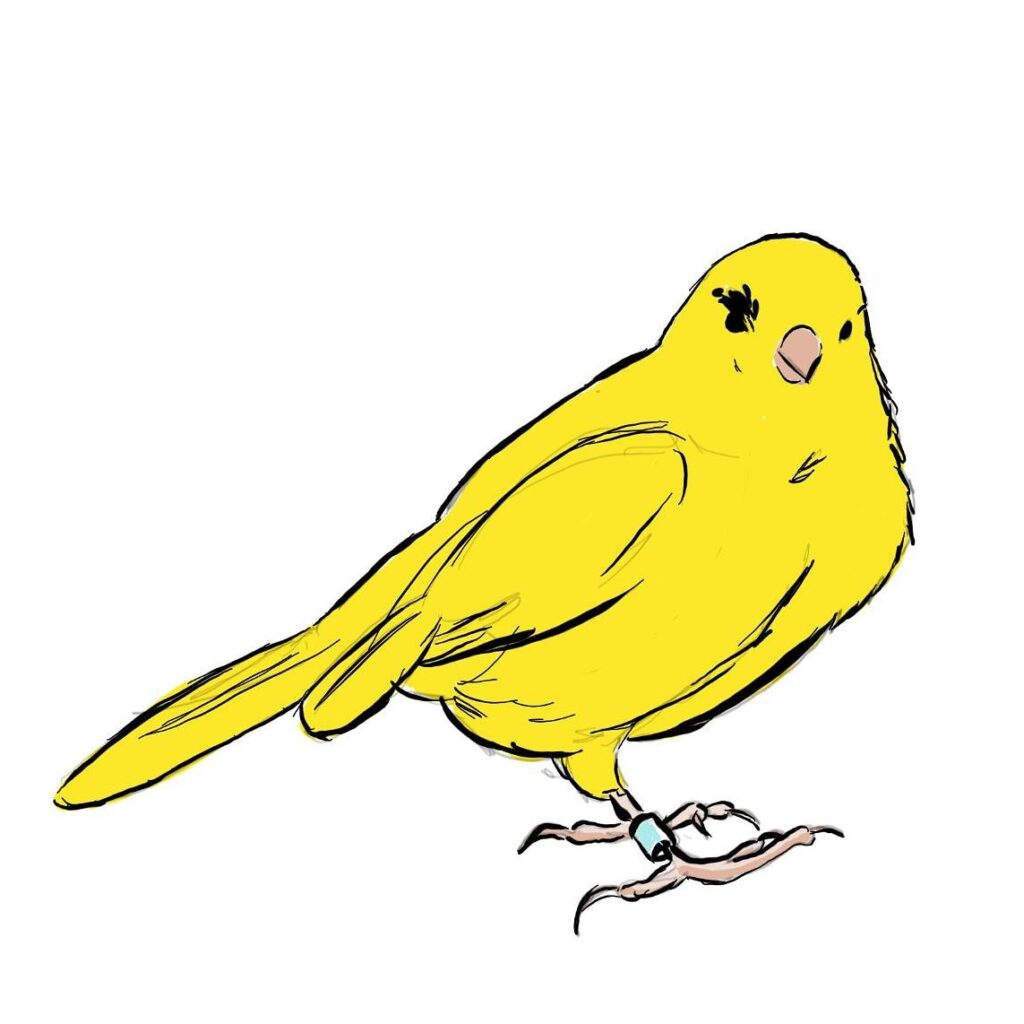
He doesn’t want to come out. Joana understood it would take time to get to know him.
She has a deep empathy with birds and is slowly, patiently, gently, working with Peaky to get him to trust his new human family. When she was younger, she made magazines written from a birds point of view called The Birds Club. And Joana is now a professional writer, currently working on a series of children’s novels where birds play the main characters. Peaky even has a little cameo.
He’s getting braver, occasionally eating treats from Joana’s hand, enjoying honey seeds, millet and spinach. Joana makes sure he has space to escape if he’s not comfortable. She doesn’t want him to perform, she just wants to prove to Peaky that he can trust her.
“I’m doing a lot of research to work on rewriting his ideas about us. He came into our lives after being birdless for a year. He has no idea how happy he makes me.”


This entry was posted in Budgies on May 4th, 2021 by alisa.deluca
Have you ever wondered if your cat can see in color? Or if they could balance on a beam better than you? While we know our cats have the traditional five senses of hearing, taste, smell, touch and sight, we wanted to explore any other curiously sensing abilities they may have. Let’s discover what cats are really capable of with their seven fascinating senses.
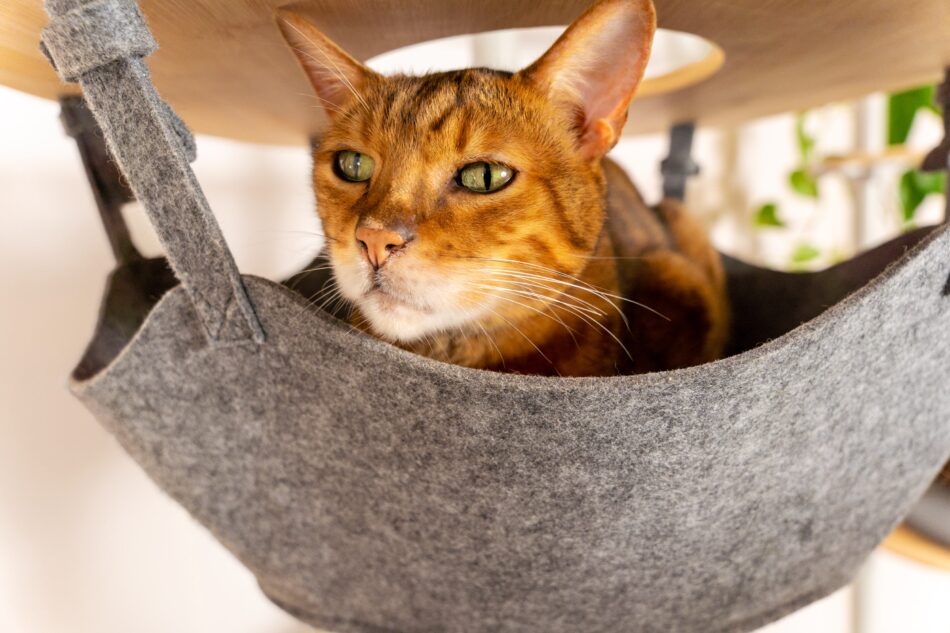
Sense of hearing
It has long been debated that dogs have the best hearing of all domesticated pets. But is that true? We hate to burst your puppy bubble, but this fact is actually false. In a room full of noises undetected by humans, cats can actually detect higher frequencies than dogs. Most cat breeds have upright ears, making responding to sound easy.
A cat’s extremely wide bandwidth coupled with its high sensitivity to sounds allows it to listen from a much greater distance than both humans and dogs. There are 27 muscles that connect the outer ear of a cat allowing for 180 degree rotation of their ears to scan the environment and determine the precise location of a sound. They can even rotate their ears independently from one another – kind of like mini satellites on their head.
Although a cat’s sense of hearing is an important part of their lives, as a cat owner, it can sometimes be difficult to tell if your cat is deaf. A cat that is partially, or even completely deaf, can actually live a life very similar to a cat with full hearing, simply relying on its other senses.
Sense of taste
While almost all of a cat’s senses are extremely fine-tuned, their sense of taste is actually the weakest in comparison to all the other senses. In fact, a cat’s ability to taste is far less strong than that of both humans and dogs.
For example, humans have approximately 9,000 taste buds with which to experience the tasty flavours of food. Cats, however, only have about 480 taste buds with which to distinguish between flavours. Every flavour except sweet, that is! Yes, it’s true – cats are the only mammals that do not have taste receptors for sweetness.
But don’t feel bad for your carnivorous cat – it’s actually been revealed that cats have taste receptors that can detect chemicals and bacteria in meat. This means cats have a built-in ability to protect themselves from potential food poisoning. So the next time you fill up your cat’s food bowl, make sure it is with something savoury, not sweet.
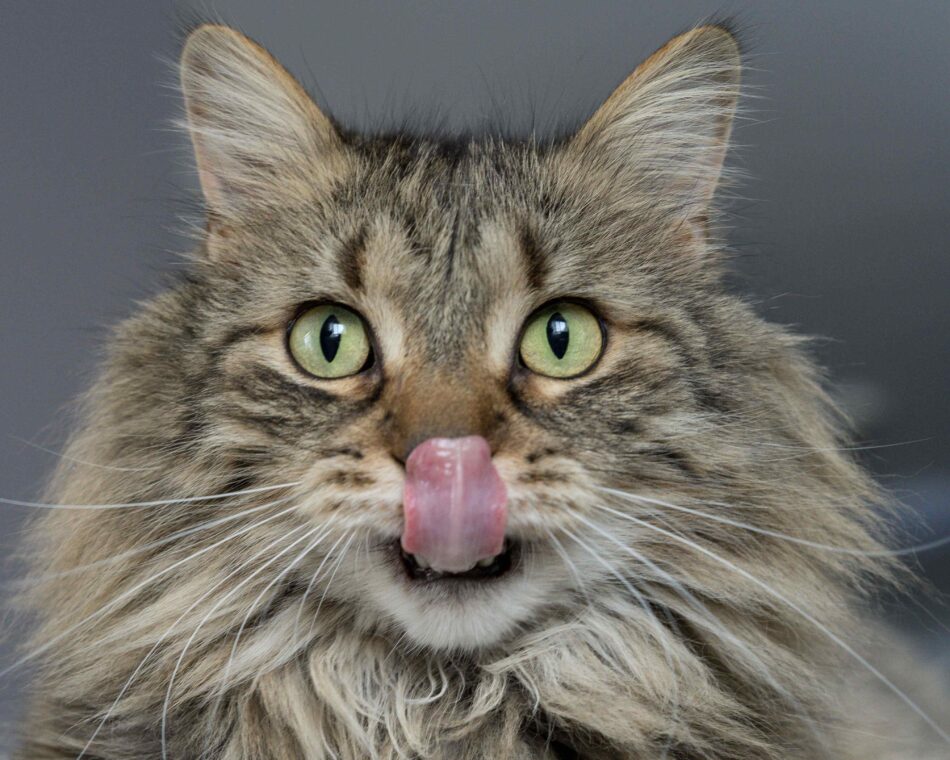
Sense of smell
In a cat’s world, smell is perhaps the most crucial sense of all. It’s through the almost 200 million odour senses in their nostrils that they identify the people, things and objects in their life. In fact, cats can even use their sense of smell to identify the emotional state of other animals as well as the chemicals produced by human sweat.
Have you ever wondered why your cat was rubbing its face or tail on scratching posts or toys? It’s not because they have an itch. Cats actually have seven scent glands across their body and they use these unique points to mark their territories of things and humans.
Scientists believe that cats have a smell sense capability of up to 150 feet, which means they could literally smell their food across a football field! But that amazing sense of smell is not just for dinner time – it also helps protect them. For indoor cats, gaining access to the outside world, exploring new scents other than in the home, is an important part of their brain/body development. Consider adding a safe cat enclosure outside, such as the Catio designed by Omlet.
Sense of touch
One of a cat’s many superpowers is its ability to feel something without touching it. How can they do that? The power is in their whiskers. While whiskers are no doubt the signature feature of any cat, they are undoubtedly the secret weapon that gives them a highly enhanced sense of touch.
Located on not just their face but their nose and ears too, cat whiskers allow a cat to explore objects and understand texture without the danger of having to touch it with their skin. In essence, you could say whiskers are a cat’s safeguard against life’s obstacles.
In addition to their whiskers, cats can also feel and touch with the pads of their paws. These pads contain multiple receptors that allow them to feel pressure and vibrations of their environment, which explains why cats are such good hunters.
Sense of sight
To truly understand a cat’s sense of sight, look no further than their wild animal cousins, lions and tigers. Big cats in the wild do the majority of their hunting of prey at night in low light conditions, like moonlight. Why? The most significant reason is simply because cats have fantastic night vision. Compared to humans, cats can see six to eight times better in the dark.
So does that mean my domesticated pet cat can only see well at night? Not at all! Cats still have good vision during the day. But their slightly wider field of vision means they can keep an eye on their territory from one spot. That’s why they can see the subtle and quick movements of a cat toy and pounce so quickly.
As for colours, cats are not completely colour-blind. They have fewer cones in their eyes which means colours like green and red appear to look grey to them. Brighter colours, such as blue and yellow, are far more appealing to cats as they can see those hues better!
Sixth sense of balance
Have you ever watched your cat jump off a shelf onto the ground? They make it look so graceful and easy, don’t they? There’s a reason felines can fall with such style. Because of the extra vertebrae in their bodies (more than humans!), cats have extremely flexible backbones and a fine-tuned sense of balance.
In fact, their ability to twist and contort their bodies mid-air to right themselves around, allowing a soft landing on their feet has a scientific name. It’s called the “righting reflex”. A cat’s balance, fast reflexes and unique physiology combine harmoniously as early as four weeks old, giving them the ability to innately protect themselves from a fall.
But this balancing act isn’t just for protection. Cats instinctively love to jump because of it. So if you have a cat, make sure you also have many options for them to jump on and from so they can let their inner balance sense shine. The Freestyle Cat Tree designed by Omlet is a perfect option to allow your cat the freedom to explore and be happy!
Seventh sense of time
If you’ve ever been woken up by a cat paw to the face right before the alarm goes off, it’s not because your cat is a genius and can suddenly read time. Just like humans, cats have a highly intuitive internal clock that ensures they know when it’s time to nap in a cosy bed, play with toys or hunt their favourite smells.
The same way your body gives you signals and clues that it’s time for lunch or close to bedtime, your cat feels this sense too. Studies have shown that cats start producing digestive chemicals shortly before mealtime, signaling to their brain that it’s time to eat. Or maybe they really are furry little geniuses who have figured out how to make you adhere to their every need!
When it comes to senses, cats have them all and more. Not only are the seven senses they possess fascinating, but they are the tools by which cats navigate the people, places and things around them. So next time you are with your cat, use your own sense of sight to view how your cat senses the world around them.
At Omlet, we are always asking how we can get closer to the curious cats we all love. Understanding their needs and senses allows us to create essential products like the Catio, Maya Donut Bed, and Freestyle Cat Tree. After all, our fascinating feline friends deserve these fascinating creations.
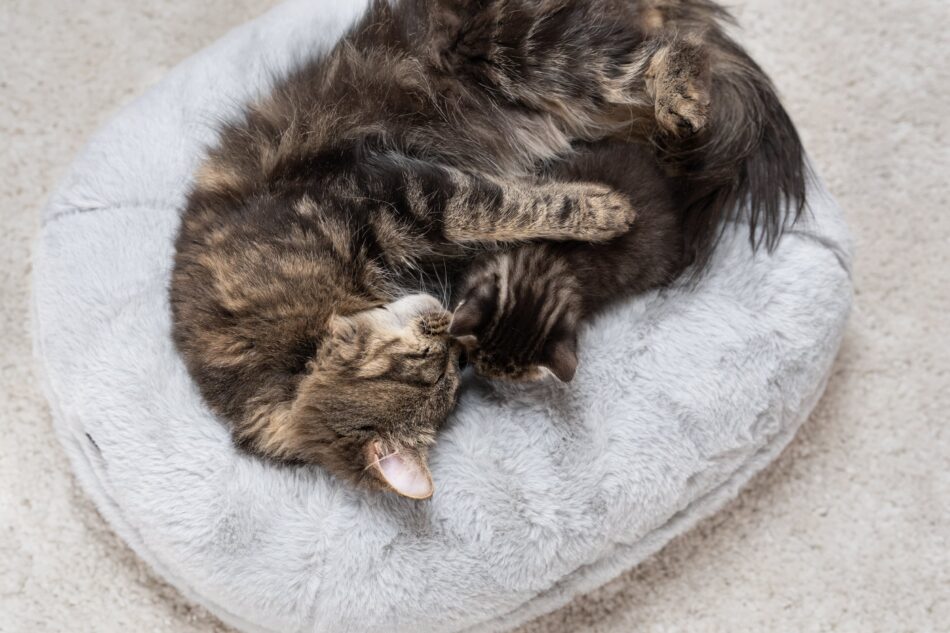
This entry was posted in Cats on May 4th, 2021 by alisa.deluca








